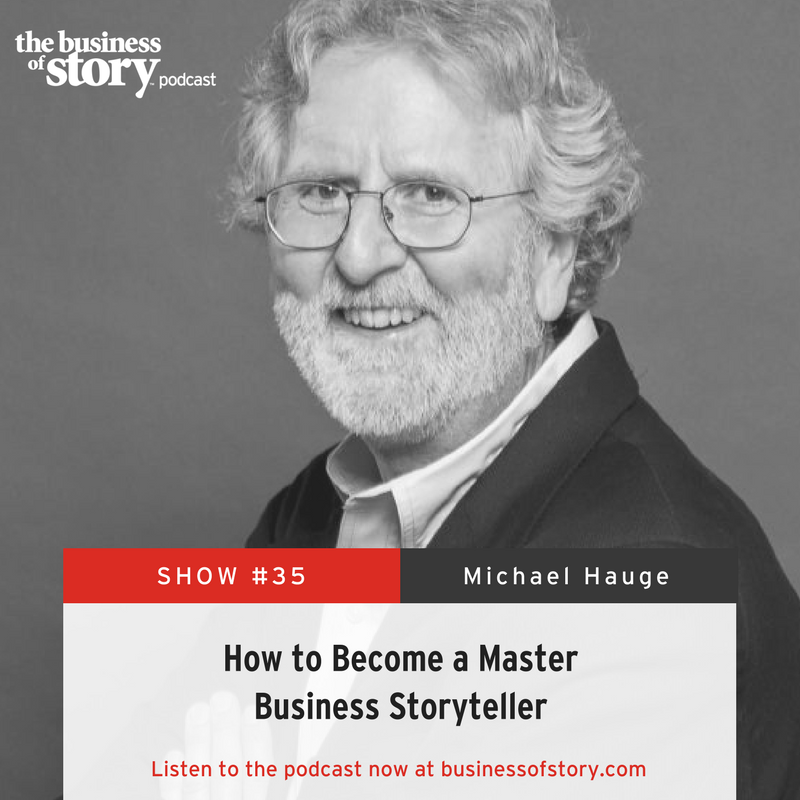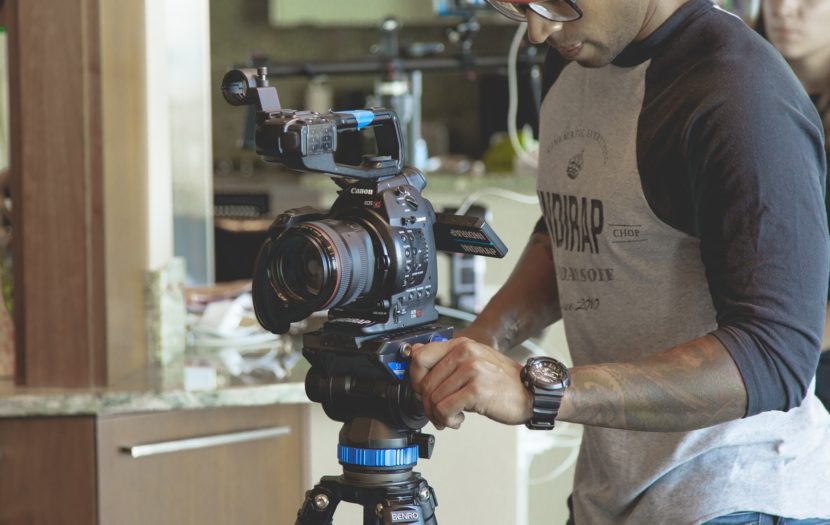What you can learn from Hollywood movie pitching about selling your brand story
The pitch. It’s as old as cinema itself. A writer, director, or other creative type walks into the office of a big-wig studio mogul and tries to sell them on the idea of turning their idea or screenplay into an actual motion picture.
The process is famously fraught with peril for the person pitching, for two key reasons:
- You’re asking a producer or a studio to spend a lot of money to turn your idea or script into a film or tv show, without having any guarantee that the project will be successful.
- Everybody and their half-brother is pitching a project, so the producer or studio has a lot of projects to choose from. Which means the competition is fierce.
But for the person with a firm grasp of their own story — their personal story, not the fictional story that might be tucked away in that screenplay — the process of pitching an idea can be much easier, and have a much higher chance of success when it comes to winning over your audience and bringing your idea to life.
Sound familiar with your brand story? As Simon Sinek said, people buy why you do what you do. The how and the what you do are just expressions of your why.
People want to know who they’re working with
This might seem obvious, but the person across the table listening to your pitch is being asked to spend a lot of money on you. And that means having you involved and likely keeping you involved over the entire life of the project.
Imagine yourself as that executive, being asked to take on a project by someone you’ve never met, sitting across the table from you. Accurately sizing up someone you’ve just met in a situation with far less money at stake is hard enough. Doing it with $20m on the table, and with the possibility of having to work with this person for the better part of 1 or 2 years, or even longer, is quite a different beast.
As that executive, you’d want to hear what this person’s all about. Where are they from? What other projects have they been involved with? What drives them creatively? These and many many other questions are streaming through the head of the person your pitching throughout the entire meeting.
Your job is to answer those questions and allay future ones that may pop into their heads at that meeting, by weaving your own personal story into the pitch itself.
Proving you’re a good storyteller
The second key reason your own personal story is vital to a successful movie pitch goes to the very core of what you and the studio are attempting to achieve: telling a great story that can find an audience. And how do you, the person pitching, prove that?
By proving right off the bat that you can tell a good story… in the pitch meeting itself.
Pitching your film or script is one thing. There are a zillion different ways to do it, and almost as many great pointers and tutorials on what to include and what not to include.
Pitching yourself by telling your own story in that meeting is quite another.
Here’s the anatomy of a typical pitch:
It starts with introductions and small talk.

Learn from Hollywood screenwriting legend and coach, Michael Hauge, how to master your business storytelling on this special episode of the Business of Story podcast. Click on the image to listen.
Then as soon as that wraps up, the pitching party gets down to the business of telling the story of their screenplay (or proposed film or tv series) to the producers and/or executives sitting across the table.
And that stuff? Well, it’s just the skinny. The good parts. The pitcher doesn’t go into great detail, they just relate the major elements and beats of the story: Who’s the main character? What are they up against? What happens if they fail? What happens after they fail? And then, boom, how it all wraps up. Preferably with a few twists and turns.
It’s all an opportunity to prove to those investors that you’re a great storyteller. So don’t drop the ball.
It’s not over, though. The actual pitching of the project’s story, plot, and characters, is just one small part of the pitch itself. Because after that’s finished, it’s just the pitcher and the decision makers in that room.
This is the part where your own personal story comes into play and really help your chances of closing a successful pitch.
Your personal story is the “pepper”
If the executives you’re pitching love the story you just told, awesome! It makes things a lot easier. But you’re still only halfway there. You’ve still got to convince them that you’re someone they want to work with.
If the execs don’t fall in love with the story you just pitched, you can still make the interaction worthwhile. How? By making sure you comport yourself with all the requisite societal manners and protocol, sure. But also by “peppering in,” wherever you can, as naturally and as organically as possible, your own personal story.
For example, the pitch of the storyline wraps up. You can tell the investors aren’t really “feeling” what you put out there. But they ask some questions anyway because any good decision maker is going to want to see if there’s something they can “mine” from the pitch, no matter if it’s not a fit for them. For example, maybe the storyline or some major elements can be tweaked to fit some other slot they are looking to fill.
Your job, during those questions, no matter how responsive they are to your story, is to pepper in you. Your story. What gets you up in the morning, what inspires you, what made you become a filmmaker or writer or whatever you are?
If they loved your storyline, peppering in you during the follow-up questions can help close the deal. If they hated your storyline, peppering in you during the followup questions may not sell them on the story or script you just pitched, but it may just convince them that you’re someone worth working with on something else — perhaps some other project they’ve got going — or that you’re someone they need to remember or someone they associate with good feelings and a memorable experience.
Maya Angelou famously said, “I’ve learned that people will forget what you said, people will forget what you did, but people will never forget how you made them feel.” If you’re a storyteller, then be a storyteller that can not only tell a good fictional story, but a storyteller who can make people feel.
How to use your story to your pitches
Before you pitch any story, make sure your own personal story is riveting, or heartwarming, or inspiring, or admirable in some way. Here on the Business of Story, you’ve got access to a wealth of great tips, tricks, and best practices on how to do just that, but here’s how I recommend doing it:
Tell us where you started, tell us how you first got inspired, tell us how you fought against the odds to follow your path. Take the highest points in your career or art, then the lowest points, and then craft them into a narrative, even just a short blurb or paragraph that takes the “character of you” from point A to point B in a way that makes another human feel something.
Leave out the boring stuff. Then keep a side list of “fascinations” about you — little anecdotes that make people’s ears prick up, or cause their hearts to flutter. It could be about how bullies threw you into a trash can back in junior high, which made you walk home and pick up a Super 8mm camera and make a movie that launched your love of film. It could be how you worked your way through school. It could be how you beat cancer or overcame the odds in some other way. Or it could be smaller, quieter, like how you saved up for your first computer by working a paper route.
The goal is to take the true things about you and distill them into something interesting that those decision makers across the desks can glom onto emotionally, or instinctually. People in the film business, by and large, got into the business because they love movies and the power of emotion. They want to work with that. They want to channel that. They love stories. Give them one about you.
All that said, relating all that info, all of that personal story, to the people you’re pitching, shouldn’t be the process of reading off a paragraph or two, or sucking all the oxygen out of the room while you filibuster your bio. It’s vital that you only casually and periodically weave it in, and never in an artificial way.
Bottom line: know your story, make sure it’s distilled to its best parts, and be ready to weave it into conversation during that pitch, as naturally and as organically as possible. The people you’re pitching are sitting across that table listening to your script’s story, but they’re also thinking a dozen different things:
- They’re imagining what it’s like working with you
- They’re imagining how their boss or their peers would react to them championing you or your project
- They’re imagining how to tweak your project to be a perfect fit for what they’re looking for
- They’re imagining how to ask you nicely if you wouldn’t mind tweaking your project to be a perfect fit for what they’re looking for
But most of all, they’re genuinely hoping to hear your story — your personal story — because that gives them the best insight as to how much of a fit your script or project’s story will be for their company. So get ready to weave it into your conversation, weave it in when you answer their questions, weave it in with your patient expression every time a junior exec or some insecure producer takes 5 minutes to brainstorm “tweaks” to your script’s story that you may feel are completely wrong for it.
And, of course, be ready to just tell it, if they ask for it. Pitch your own personal story just as you would your screenplay.
In short, make ’em laugh, make ’em cry. And also do that with your script. But remember: they’re not just buying your script’s story. They’re buying your story, too.
Brian O’Malley has written, produced, and directed several feature films, including Audie & The Wolf, Minimum Wage, and the Fangoria favorite, Bleak Future. He started his film career with B-movie maverick Roger Corman (Death Race 2000, Little Shop of Horrors) and runs the script coverage service, Screenplay Readers.










